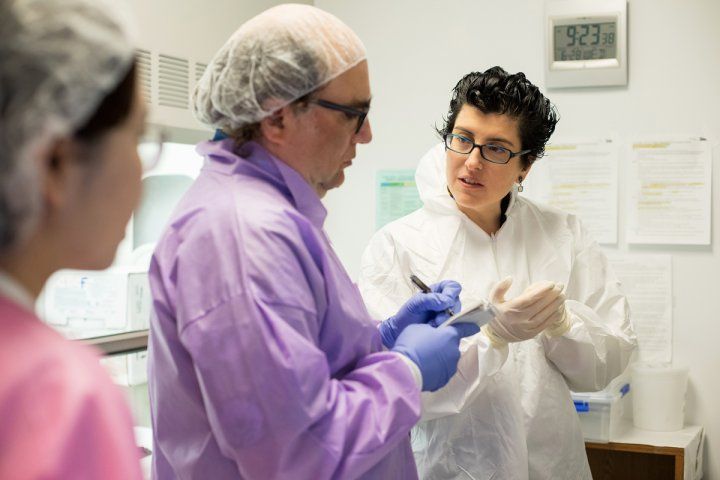lea-grinberg-and-josh-kornbluth-lab.jpg

Memory loss is the most common symptom of Alzheimer’s disease, but many patients also experience problems with language, spatial awareness, and other cognitive functions, particularly as the disease progresses. Understanding the biological differences that drive these distinct symptoms could lead to more personalized patient care and potentially therapies targeted to patients’ individual needs.
A new study from the UC San Francisco Memory and Aging Center points to a potential culprit: misshapen astrocytes — a crucial type of helper cell in the brain — that accumulate the same pathological tau protein normally seen in diseased neurons in the Alzheimer’s brain.
These damaged cells — first described and linked to Alzheimer’s language symptoms by a small 2007 study — have been dubbed “white matter thorn-shaped astrocytes” because of their twisted, thorn-like shape and their location at the border between the neocortex — the brain’s outer “gray matter” layer, responsible for higher cognitive functions — and nearby tracts of insulated nerve bundles referred to as the cerebral “white matter.”
Following up on this lead, neuropathologist Lea T. Grinberg, MD, PhD, and colleagues at the UCSF Memory and Aging Center studied thorn-shaped astrocytes in the brains of 83 Alzheimer’s patients from the UCSF Neurodegenerative Disease Brain Bank — one of the world’s largest collections of brain tissue from patients with early-onset or “atypical” Alzheimer’s presentations — and looked for potential associations with symptoms the patients had experienced in life.
The authors’ analysis showed that patients with high levels of white matter thorn-shaped astrocytes in language-related areas of neocortex — in addition to normal Alzheimer’s plaques and tangles throughout the brain — had specifically experienced more trouble with speech and remembering words as part of their disease. In contrast, patients with thorn shaped astrocytes in brain areas involved in spatial reasoning had experienced specific problems with this cognitive ability.
“Interestingly, the effect is regional,” said Grinberg, who is John Douglas French Alzheimer Endowed Professor at the UCSF Memory and Aging Center and an associate professor of neurology in the UCSF Weill Institute for Neurosciences. “Someone with thorn shaped astrocytes in the brain’s language area would have worse language scores but “normal” scores for other cognitive domains. Conversely, someone with these damaged astrocytes in spatial-reasoning areas would have worse spatial scores but normal scores for other domains.”
The findings are the first to associate these tau-filled thorny astrocytes with regional cognitive deficits, and represent an important biological insight into understanding the changes underlying the diversity of clinical presentations and patient experiences seen in the disease.
Crucial to the success of the new study, Grinberg says, was the UCSF Memory and Aging Center’s long-standing dedication to taking a precision medicine approach to Alzheimer’s disease and other forms of dementia, carefully studying and documenting what makes patients who come to the center different from one another, rather than lumping all cases of Alzheimer’s together.
“We are now investigating why these tau-filled astrocytes make specific cognitive symptoms worse, which we hypothesize may have something to do with damage to the blood–brain barrier,” Grinberg said. “The link between blood brain barrier and astrocytic changes has been explored before in animal models, but this work and the open, collaborative culture and expertise of the UCSF Memory and Aging Center makes it possible to study this question in the human brain in a structured, scientific way.”




